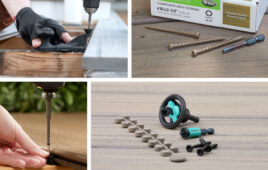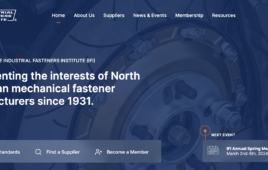Written by John Synder, General Manager
Transportation, Southco, Inc.

At the Supermarket: Checkout Counter Customer Pays with Smartphone for His Food Items. Big Shopping Mall with Friendly Cashier, Small Lines and Modern Wireless NFC Paying Terminal System.
There’s much talk about how digital our world is becoming. It’s easy to point to the smart wireless devices and 5G networks that give us 24/7 access to digital content and tools that have become essential to daily life.
Nevertheless, we interact countless times a day with physical items. Systems, equipment, and devices including automobiles, ATMs, lighting fixtures, and everyday appliances are manipulated (opened, closed, adjusted, locked, unlocked, etc.) with little thought by many users as to how these mechanisms provide access.
This “touchpoint” experience is often taken for granted. However, the ease and accessibility such mechanisms offer can affect how users perceive the overall quality of their application.
Whether it’s a hand-operated latch used to access a vehicle’s glovebox or a counterbalance hinge that holds open a heavy engine hood, a seamless and intuitive user experience is important to ensure quality — and safety. The better the experience for the driver, in this case, the more likely they’ll appreciate their overall vehicle. Small access hardware mechanisms might seem basic but they contribute to the performance, ergonomics, and security of larger applications and can significantly impact the end-user experience.
For equipment manufacturers, sometimes this is easier said than done. It involves designing mechanisms to meet the functional needs of the applications while keeping simplicity and ergonomics in mind. Smarter designs can, ultimately, offer a safer, higher quality, and better overall touchpoint for users.
Engineering the user experience
Smaller mechanisms can play a critical role in optimizing a user’s experience of a device. For example, a hinge can change the angle on a self-service kiosk at a convenience store or a touchscreen checkout at the corner market to make it easier and more ergonomic to use.

Redesigning the handle-latch mechanism for a vehicle’s glovebox door can greatly improve its accessibility — and safety, particularly if used while the car is in motion.
To do so, however, designers must choose the ideal type of hinge to make it easy to change the angle of the touchscreen while holding it in place. The device must also remain sturdy enough so the screen can move and yet stable enough to remain still while a customer taps on the screen to complete their order.
A positioning hinge is one example of a simple, yet well-engineered mechanism designers can use to provide ergonomics and ensure the user experiences a quality application.
Ideally, its features include the ability to:
- Hold doors open or closed, and move panels steadily into position without secondary supports or additional components.
- Create an intuitive, zero-drift motion so that when a door or cover is opened, it securely holds a user-defined or predefined position, with one motion.
- Eliminate additional components (such as gas struts) or routine maintenance (such as tightening screws every week or two to maintain hinge resistance), thereby lowering costs.
- Eliminate vibration, providing a smooth and steady feel to the opening or closing action.
Mechanisms like positioning hinges that change — or elevate — a user’s perception can be applied in several ways.
Consider an airplane tray table, for instance. Seating designers must use extremely lightweight plastic components in these applications to help airlines reduce fleet weight and conserve fuel. But a tray table that simply flops down when opened may lead passengers to question the quality of the aircraft or airline.
By using a constant torque hinge with a factory-set level of resistance, a passenger can lower the tray with just the right level of force. With this simple design choice, passengers are essentially given a better product and are more likely to have confidence in the quality of the airline and their inflight experience. Sometimes it is the little things that make the difference.
What’s more: constant torque hinges designed and manufactured with high-quality materials retain the desired resistance after thousands of flights, without requiring maintenance or parts replacement.
Intelligent designs
The ideal small mechanism is one that provides the desired function without increasing the efforts required of an end-user. It also means the device is simple and easy to use without adding any unnecessary sizing, weight, or complicated features.
Consider the two common storage compartments in the front of a car: the glovebox and the center console. How a driver accesses and uses those two compartments is often different.

Hinges designed with integrated constant torque can be added to small panels and doors, providing a smoother, more secure feel when opening or closing. Southco’s ST-7A Constant Torque Embedded Hinges, shown here, features a compact packaging size.
On the glovebox, the latch is typically located in the center of the door. It may have a lock or be unsecured. To open a locked latch, a user would have to turn the car off and remove the key from the ignition. In either case, the driver has to lean over and reach for the latch — something they often can’t safely do while the car is in motion or stopped at a traffic light.
A simple design fix: move the latch to the left of the box and closer to the driver to reduce strain and create a more ergonomic user experience. A customized rotary latch with multi-point contact supplies two points of contact to secure the door. Plus, the lift paddle is closer to the driver for easier access.
One step above this solution: install a button directly in front of the driver, which opens the glovebox. This more advanced design could use either a mechanical rotary or an electronic latch that’s hidden from view and connected to this button via a cable or direct actuation.
To prevent the glovebox door from dropping open, potentially spilling its contents, consider a friction hinge that allows the door to open slowly. It also adds a quality of sophistication to the design that’s likely to improve a user’s overall impression of the vehicle’s make.
Additional layers of safety and security can also be included. For example, certain electronic latches can be programmed to avoid opening if the key fob is not present or if the vehicle is moving at a designated rate of speed.
The challenge for equipment manufacturers is to define the user experience in terms of function, safety, ease-of-use, quality, and overall impression.
Another factor to consider for this design process is that gloveboxes may not be routinely accessed as frequently as the center console units. Many drivers open and close the center console to retrieve or put away material multiple times during their commute. Incorporating an access device that’s simple-to-use without the need to glance down at it while driving is key to creating a safe and seamless experience for the operator.
The cover should also pop open and stay open until the user is done, and not close due to bumps or vibration caused by the vehicle while in motion. Latches and hinges that are designed to deliver such ergonomic operations can be integrated during the manufacturing process to ensure a driver never has to think twice about how easy it is to access the center console.

Constant torque hinges with factory-set levels of resistance can ensure an aircraft’s tray table releases slowly (without jarring), improving the passenger’s confidence in the overall quality of the airline.
Repeatability
Regardless of what type of equipment or devices manufacturers are providing — aircraft seating, automobile interiors, self-service kiosks, gaming machines, equipment enclosures for telecommunications, or electrical equipment — offering effective access and positioning control mechanisms are critical.
One key is in asking the right questions: How should the mechanism ergonomically open, position, and close a device? What user feedback is needed to accomplish this motion effectively and repeatedly?
Repeatability is important in terms of reliability and quality. Whether delivering large volumes of automobile interiors or equipment enclosures, it’s critical that the manufacturer engineers smart designs that deliver reliable performance throughout the lifecycle of the product.
These small mechanisms can have a big impact. Ideally, mechanism suppliers and equipment manufacturers must work together to ensure that the right mechanism is delivered to maximize the quality and efficiency of each user experience.





Tell Us What You Think!